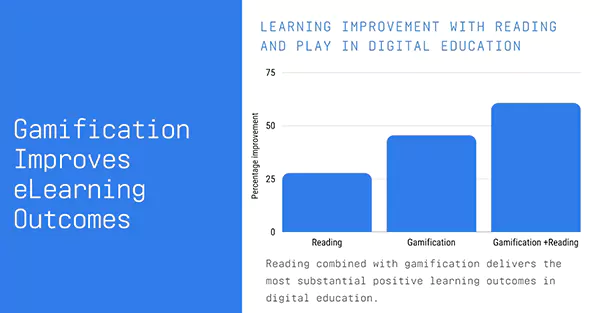In today’s dynamic technological world, every industry is getting revolutionized, and ed-tech is not an exception here. Technology has become an integral part of the education system now.
It is the need of the hour that every student must have to learn tech measurements to improve their studies. Right knowledge of technology is very necessary for all students, including school students, college students, and students preparing for some exams.
For instance, if you are a law student and searching for law essays examples, you can get them on websites and apps. In this article, you will get to know the latest tech trends and tips for students.
6 Tech Tips Every Student Should Know in 2024
In recent years, the Edtech industry has grown like never before. We frequently get to see the new technologies making learning more accessible and effective.
Artificial intelligence, VR technology and 3D learning are some examples of helping students in their studies. Here are the top 6 tech tips students can incorporate in their studies to improve learning.
Embrace Artificial Intelligence (AI): The potential of AI is constantly increasing in education day by day and enhancing individual learning experience.
Before using AI in classroom learning on a mass level, first, we have to change the mindset of people from ‘technology will distract students’ to ‘It will improve the learning experience.’
With the use of AI, students will get a personalized learning experience according to their grasping pace and style. Assessment of students is the most vital part of learning.
AI can help students assess their learning more effectively by replacing traditional measures like essay writing or multiple-choice questions. One prime example of it is the English learning app Duolingo, which uses AI for students’ assessments.
Gamify Your Learning: Gamification is an effective measure through which students can increase their concentration and store learning in the mind for a long time.
Imagine how the learning environment will be when students will participate in educational quests with other students around the globe and earn achievement badges like a video game.
Using technology, educational platforms can provide customized learning and assessment tools to every student to improve learning.
Gamification of learning will also help in developing soft skills in students like collaboration, problem-solving abilities, etc. These skills will not only help students in their studies but also their personal and professional lives.

Interesting Facts
The above graph shows how gamification of teaching theoretical concepts improves learning. Gamification alone can improve the outcomes of learning by 45.45% if incorporated in the right way. Challenge-based gamified learning improves students’ focus and grasping power
Explore Virtual Reality (VR): Virtual reality or VR is a technology that creates a virtual simulated environment around us. New subsets of technology of VR like 3-D learning, augmented reality, and mixed reality facilitate students to understand theoretical concepts quickly and better.
For example, if a teacher is explaining a physics topic to students, in this situation the learning can be made more engaging and memorable through the use of VR in making a respective environment around students. Some of the major advantages of VR for students are the following:
- Helps in increasing emotional intelligence and awareness.
- Improves student retention and focus power.
- Make it easy to grasp complex topics and fundamentals.
Use Educational Apps: Educational apps are developed with the single purpose of improving learning. During COVID-19, all institutions were trying to build their apps or using public platforms to connect with students.
It is not the first time apps were used in education, but before COVID it was limited. Using mobile applications for studies is not just limited to attending lectures, you can also use these apps for time management, note organization, and increasing productivity.
These apps are very useful for college students who are looking to manage their studies and seeking a research proposal writing help service to complete assignments on time.
Students can take advantage of the free study material provided on these apps like quizzes, ebooks, handwritten notes, etc. These apps are effective in reducing the communication gap between teachers and students and help students in sharing study material.
DO YOU KNOW?
Edtech companies contribute over £1 billion every year to the economy of the United Kingdom? The Thai number is expected to grow by $252 billion in the coming years.
Flipped Classroom Model: This is a learning model for students, in which students engage with new material while sitting in their homes to utilize the classroom time to expand knowledge under the guidance of the teacher.
If we talk about the benefits of this method, it facilitates both students and teachers. A study by Montana State University shows that in traditional teaching methods, teachers use too much time in introducing new topics.
But with the flipped classroom model, a large chunk of this time gets reduced and students get enough time to understand the concepts deeper. The following are the key benefits of this model:
- Increases student’s independent learning skills.
- Help in building a deeper understanding of the topic.
- Classroom time gets more engaging and productive.
Use Proctored Exams for Remote Learning: This is a method of conducting online exams in which a third-party test proctor is hired to monitor the exam. As we all know, online exams and remote learning have grown widely in just a few recent years.
Thus, students and teachers often feel confused and anxious while conducting online exams. To cope with this confusion, students can appear on a mock test with a proctor.
Other than this, remote proctored plays a vital role in reducing cheating during online exams, and it will be rewarding for honest students.
If a student faces a problem like a system crash, a pet jumping on a keyboard, or kids crying in the house, in this case, a live proctor helps students manage the trouble.
Final Thoughts
Students who are focusing on their studies and using technological advancements to improve learning will surely be successful in their field. By incorporating technology, not only students can be good at their studies but can also improve their soft skills.
You can use different apps and websites to access study material and can manage your time and tasks with the use of productivity apps.
Overall, it’s up to you how you involve technology in your education to take maximum benefit from it. If you find this post helpful, check out another E-learning article on our website ityug247.com, and share it with your classmates and teachers.







